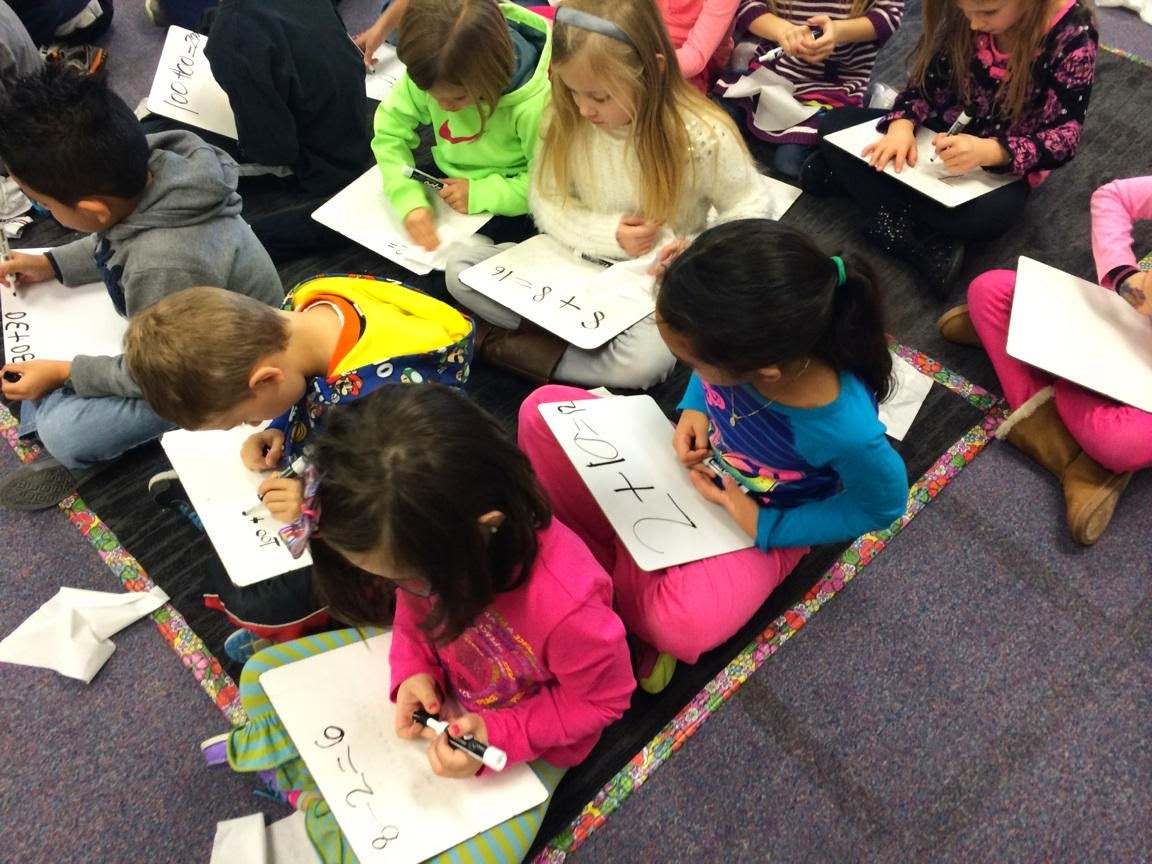Our amazing 1st graders are on their way to becoming experts at Addition and Subtraction. They are learning to make their thinking flexible in order to show their fluency with number operations.
Our 1st graders can
add...
subtract...
add and subtract to balance an equation...
balance an equation with more than one equal sign...
And they can do all of this with the confidence to tell us how!
This unit focuses on the Associative and Commutative Property.
Here are two experts to explain these properties to you:
They can use dominos to get started:
Number lines help us solve the tricker equations:
For our test on Friday, March 6th, your child should be able to solve the following types of problems:


Also, to show our operations fluency, some classes have experimented with number puzzles. These puzzles ask you to think in one more, one less, 10 more and 10 less.
Listen to this expert solve a number puzzle for you:
We look forward to another impressive week in math!
- Mrs. Bright, Miss Christensen, Miss Gianakakos and Miss Steimel
Standards Covered:
1.OA.B3
Apply properties of operations as strategies to add and subtract.2 Examples: If 8 + 3 = 11 is known, then 3 + 8 = 11 is also known. (Commutative property of addition.) To add 2 + 6 + 4, the second two numbers can be added to make a ten, so 2 + 6 + 4 = 2 + 10 = 12. (Associative property of addition.)
1.OA.C6
Add and subtract within 20, demonstrating fluency for addition and subtraction within 10. Use strategies such as counting on; making ten (e.g., 8 + 6 = 8 + 2 + 4 = 10 + 4 = 14); decomposing a number leading to a ten (e.g., 13 - 4 = 13 - 3 - 1 = 10 - 1 = 9); using the relationship between addition and subtraction (e.g., knowing that 8 + 4 = 12, one knows 12 - 8 = 4); and creating equivalent but easier or known sums (e.g., adding 6 + 7 by creating the known equivalent 6 + 6 + 1 = 12 + 1 = 13.)






.jpg)
.jpg)






.jpg)
.jpg)
.jpg)
.jpg)
.jpg)
.jpg)






.jpg)

.jpg)
.jpg)
.jpg)
.jpg)
.jpg)
.jpg)
.jpg)














